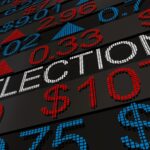“No man ever steps in the same river twice, for it’s not the same river and he’s not the same man.” – Heraclitus
This insight from an ancient Greek philosopher is a relevant way to consider financial markets. Many parallels can be drawn between the financial markets today and those of years past, including what things looked like heading into prior recessions. It’s very possible we’re already in – or will soon experience – a recession here in the United States. GDP contracted 1.6% in the first quarter of 2022, and the widely used definition of a recession is two consecutive quarters of negative GDP growth.
Research shows that market downturns – often contemporaneous with recessions – are, on average, accompanied by positive returns over subsequent one-, three-, and five-year periods. Through the first two quarters of 2022, the S&P 500 has fallen 20%. On average since 1926, a 20% decline in the value of the total US stock market had positive cumulative returns of 22.2% over the next one-year period, 41.1% for the subsequent three-year period, and was up 71.8% after five years. Similar returns have occurred for smaller (10%) or larger (30%) drawdowns. Here’s an interactive exhibit compiled by Dimensional Fund Advisors showing returns, inflation, and other metrics surrounding past recessions that you may find interesting to read in conjunction with our commentary below.
In the 4th quarter commentary for 2021, we pointed out some of the similarities to the US market of the dot com era. In particular, valuations were frothy. Depending on the metric, prices for publicly traded growth stocks had eclipsed their tech bubble highs of two decades prior. While the timing was never certain, that’s a recipe for a healthy pullback in the stock market. This year has featured dramatic declines for (previously expensive) shares of growth companies to the point that some are even getting picked up by value-style mutual fund managers! The bursting of the tech bubble took several years and a mild recession followed in 2001. It’s possible that today’s market also needed a healthy correction to valuations and a cooling of excesses (such as the NFT of Jack Dorsey’s First Tweet selling for $2.9M and then losing 99% of its value). Like Heraclitus would say, however, it’s not the same “river” and investors crossing today have many other currents to consider.
Inflation during the 1970’s consistently registered in the double digits. Having peaked about a year prior to the onset of the 1973-75 recession, the US stock market fell over 46% before hitting bottom. Occasionally the term stagflation gets tossed around as a risk facing the economy today. It’s a period with both flagging growth and high inflation. America experienced this in the 70’s and it is a scenario the Federal Reserve is anxious to avoid, even if that means continuing to hike interest rates higher. The good news is there are many reasons that financial markets see higher inflation coming to an end. In fact, expected average inflation for the next five years as measured by the Treasury breakeven rates has fallen from 3.5% per year in March to about 2.5% per year now. That’s a far cry from June’s 9.1% reading but goes to show that the market is not anticipating high inflation to continue for much longer.
Of course, one could draw similarities to many financial conditions we’ve experienced before to argue for how the economy and your investments may fare in the near future. We think that the markets do a good job of ‘pricing in’ the probabilities that various outcomes will occur, such as peaking inflation or a looming recession, as over $700 billion of trades occur daily (2021 global average) based on new information and best expectations of what will happen. Therefore, rather than focusing time on the hopeless task of predicting the future, we’re at work maintaining a disciplined approach and making strategic (not market timing) changes in conjunction with your long-term financial plan to help you meet your goals.











